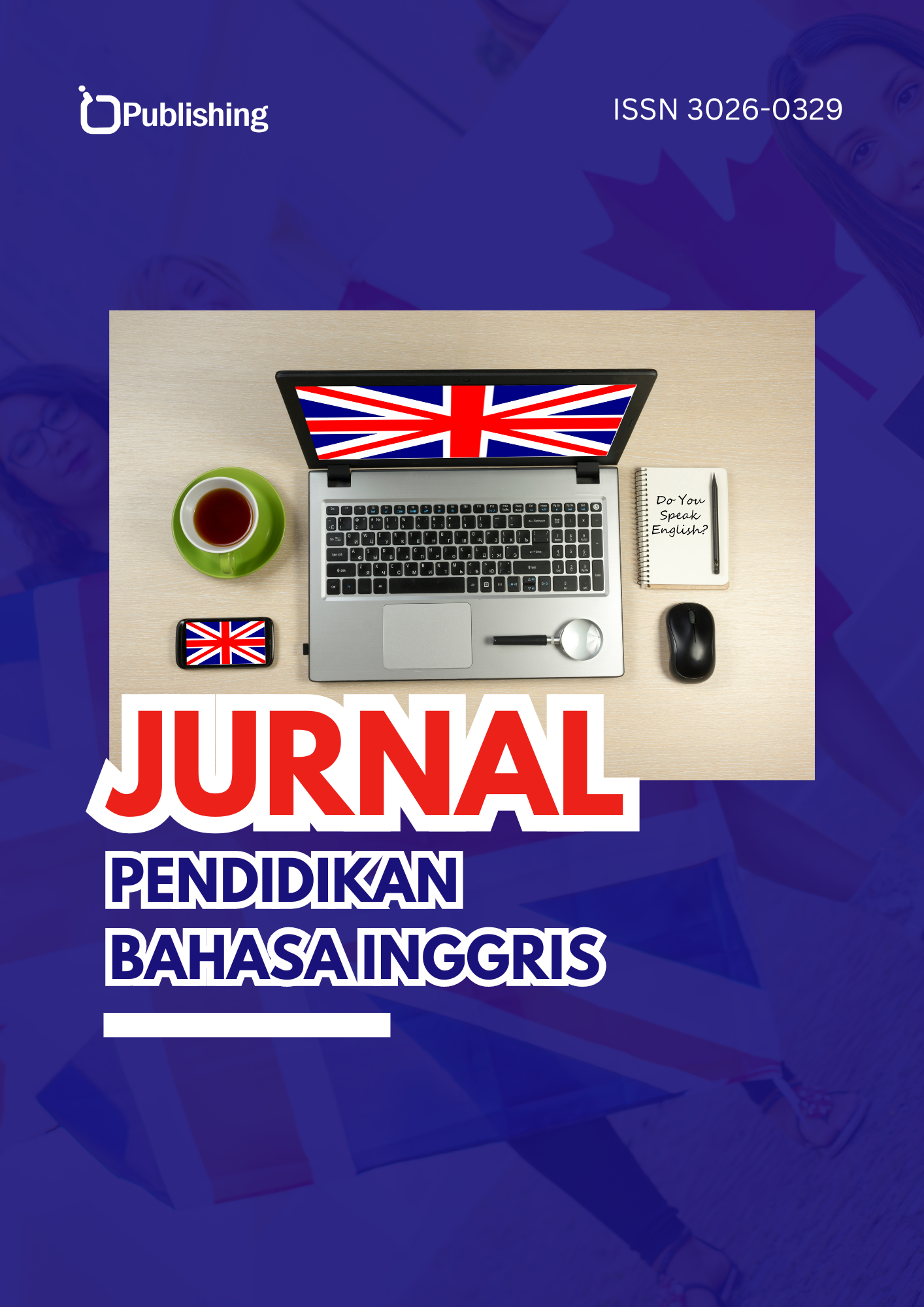Students’ Perception of Webtoon as a Self-Directed Learning Medium for Reading Skill
DOI:
https://doi.org/10.47134/jpbi.v2i1.1029Keywords:
Reading Skill, Students' Perception, Webtoon, Self-directed LearningAbstract
This research aims to describe Students' Perception of Webtoon as a Self-Directed Learning Medium for Reading Skills. Further investigation into this issue was required because Webtoon is considered a medium that enhances students' reading skills. This research uses mixed methods, with questionnaires as the main instrument and interviews as support. The object of this research was Webtoon for English learning medium. Through 16 questionnaire items distributed to 48 students, the research found a mean of 76% from 4 indicators: English learning motivation, students’ reading interest, self-directed learning medium, and students' reading skills. This research found that students believe Webtoon could enhance their English learning motivation and reading interest. Furthermore, students believe that the efficacy and accessibility of Webtoon make it an appropriate medium for learning English independently. Although students encounter certain challenges, it does not reduce the value of Webtoon as a medium for learning English because they feel a positive influence on their reading skills. As a result, students believe Webtoon was not only a fun activity but could also serve as a suitable medium for learning English.
References
Adams, W. C. (2015). Conducting Semi‐Structured Interviews. In Handbook of Practical Program Evaluation (pp. 492–505). Wiley. https://doi.org/10.1002/9781119171386.ch19 DOI: https://doi.org/10.1002/9781119171386.ch19
Ali, S., & Emirati, E. (2021). Webtoon Application and Sudents’ Reading Activity. Ethical Lingua: Journal of Language Teaching and Literature, 8(2).
Arikunto. (2006). Research Procedures (A Practice Approach). Jakarta: PT. Rineka Cipta.
As Sabiq, A. H., & Sukirno, M. A. (2020). VISUAL MEDIA UTILIZATION IN MASTERING ENGLISH VOCABULARY OF HEARING-IMPAIRED STUDENTS. INSANIA : Jurnal Pemikiran Alternatif Kependidikan, 25(2). https://doi.org/10.24090/insania.v25i2.3911 DOI: https://doi.org/10.24090/insania.v25i2.3911
Erya, W. I., & Pustika, R. (2021). STUDENTS’PERCEPTION TOWARDS THE USE OF WEBTOON TO IMPROVE READING COMPREHENSION SKILL. Journal of English Language Teaching and Learning, 2(1), 51–56. DOI: https://doi.org/10.33365/jeltl.v2i1.762
Fraenkel, J. R., & Wallen, N. E. (2009). How to Design and Evaluate Research in Education Seventh Edition. New York: McGraw-Hill.
Gibbons. (2002). The Self-Directed Learning Handbook: Challenging Adolescent Student to Excel. San Francisco: Jossey-Bass Publishers.
Gusmeri, S. U. (2020). The Effectiveness of Using Online Comic Strips on Students’ Reading Comprehension of Narrative Text.
Holley, D., & Dobson, C. (2008). Encouraging student engagement in a blended learning environment: The use of contemporary learning spaces. Learning, Media and Technology, 33(2). https://doi.org/10.1080/17439880802097683 DOI: https://doi.org/10.1080/17439880802097683
Ivankova, N. V., Creswell, J. W., & Stick, S. L. (2006). Using Mixed-Methods Sequential Explanatory Design: From Theory to Practice. Field Methods, 18(1), 3–20. https://doi.org/10.1177/1525822X05282260 DOI: https://doi.org/10.1177/1525822X05282260
Kartosedono, S. (1998). Student Reading Interest. Jakarta: Gramedia Pustaka.
M.I. Lee, JD, A. (2017). 6 Essential Skills for Reading Comprehension. Understood.
Maharani, L. P. (2021). THE USE OF LINE WEBTOON COMIC STRIPS TO UPGRADE STUDENTS’ VOCABULARY MASTERY. Yavana Bhasha : Journal of English Language Education, 4(2). https://doi.org/10.25078/yb.v4i2.2769 DOI: https://doi.org/10.25078/yb.v4i2.2769
Man, H. (2023). Understanding Korean Webtoon Culture: Transmedia Storytelling, Digital Platforms, and Genres by Dal Yong Jin (review). Seoul Journal of Korean Studies, 36(2), 686–689. https://doi.org/10.1353/seo.2023.a916940 DOI: https://doi.org/10.1353/seo.2023.a916940
McVicker, C. J. (2007). Comic Strips as a Text Structure for Learning to Read. The Reading Teacher, 61(1), 85–88. https://doi.org/10.1598/rt.61.1.9 DOI: https://doi.org/10.1598/RT.61.1.9
Miarso, Y. (2009). Sowing Educational Technology. Jakarta: Kencana Prenda Media Group.
Miles, M. B., Huberman, A. M., & Saldana, J. (2014). Qualitative Data Analysis, A Methods Sourcebook, Edition 3 (3rd ed.). USA: Sage Publications.
Ningsih, W. R., Mustajib, A., & Maizarah. (2021). THE STUDENTS’ READING INTEREST IN MEDIA “LINE WEBTOON” AT ELEVENTH-GRADE OF SMA NEGERI 2 TEMBILAHAN. J-SHELVES OF INDRAGIRI (JSI), 2(2), 110–124. https://doi.org/10.32520/jsi.v2i2.1561 DOI: https://doi.org/10.32520/jsi.v2i2.1561
Ramos, J.-J. R., & Prestoza, M.-J. R. (2022). Webtoon: A phenomenological study on reading preferences among senior high students in Quirino national high school. International Journal of Arts, Sciences and Education, 3(1), 174–186.
Santrock, J. W. (2010). Educational Psychology. Jakarta: Prenada Media Group.
Sugiyono. (2017). Quantitative, Qualitative, and R&D Research Methods. Bandung: CV. Alfabeta.
Sutarno, N. (2004). Library management: a practical approach. Jakarta: Samitra Media Utama.
Tashakkori, A., & Creswell, J. W. (2007). Editorial: The New Era of Mixed Methods. Journal of Mixed Methods Research, 1(1), 3–7. https://doi.org/10.1177/2345678906293042 DOI: https://doi.org/10.1177/2345678906293042
Yamin, M. (2013). Strategies and Methods in Learning Models. Jakarta: Gaung Persada Press Group.
Downloads
Published
How to Cite
Issue
Section
License
Copyright (c) 2024 Agus Husein As Sabiq, Naf'an Rohmatulhaq

This work is licensed under a Creative Commons Attribution 4.0 International License.










